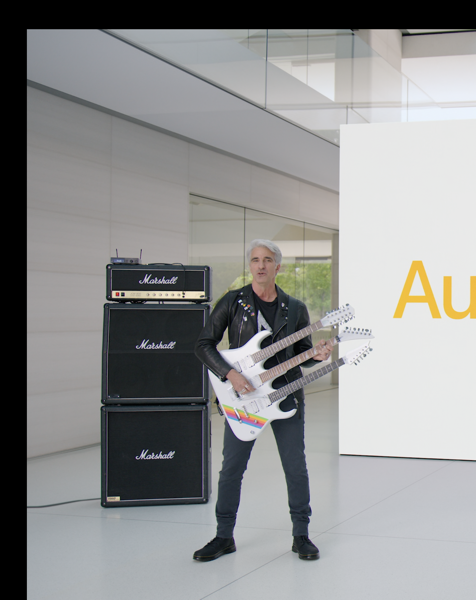
Overall, I really enjoyed this WWDC keynote, and it feels like one that belongs to the ages (after all, it’s not every WWDC that gets a brand new platform announced). WWDC events nowadays are a massive info dump sure to overwhelm every time simply because there are so many platforms now.
I want to focus on the two specific parts of the keynote that I made posts about this past week.
Mac Pro

I figured there was about a 20% chance we’d see an Apple Silicon Mac Pro announced today, and we did!
Sadly, it’s a bit of a disappointment. I outlined three different approaches Apple might take to transitioning the Mac Pro to their own chips, and Apple sadly took the least ambitious approach of all, keeping the Mac Pro with the same general compute and memory limits of its other machines.
It’s a real disappointment that the very best Mac Apple sells now has a maximum memory capacity an eighth the amount of the Mac Pro that Apple announced four years ago (to say nothing of the fact that you’re stuck with memory soldered onto the board instead of being in slots for expandability). Gone are the highly innovative MPX modules that brought new dimensions of expandability.
Instead, Apple is apparently content to let the Mac Pro not try much of anything new, and spend the next several years catching up to its Intel counterpart in key ways.
This could very well be a transitional machine and Apple may very well have something more revolutionary up its sleeve for later, and I hold out hope that we might see that in a couple years.
Vision Pro
First off, kudos to Apple for coming up with a marketing name that was in no rumors at all.
For not having given much thought to AR/VR though, I currently feel like my prediction from yesterday is going to hold up well.
Even Apple can’t get past the dorky factor, though I believe it’s a nice piece of hardware. The fact remains that it’s awkward to have a headset on, and you need a damn compelling use case to convince the masses to wear something like this.

And to Apple’s credit, the OS does indeed look beautiful and it looks like the UI elements and interactions are well thought out.
But that’s not what’s holding AR/VR back. If there was indeed a use case that only AR/VR could serve, and if it was compelling enough, people would be buying VR headsets already and suffering through the clunky interfaces. But interest remains tepid.
Apple doesn’t seem to have put forth a killer app either. They seem to hope their killer app is “take general-purpose computing to have a radically spatial UI that’s nicely executed.”
Things like 3D video recording (and viewing) and substantially more immersive Disney movies sound nice, but none of them are nice enough that you’d buy dedicated hardware just for them.
Apple is marketing Vision Pro and pricing it like a brand new general-purpose compute platform. Apple’s track record with building up brand new compute platforms is a little shaky, though. The iPad is Apple’s most recent attempt at building a brand new general-purpose computer platform, and iPadOS has evolved at a glacial pace compared to the Mac’s evolution. Some concepts were a slam dunk for Apple (like their cursor support), but other things, like general-purpose multitasking, are these multi-year blunders Apple still hasn’t quite gotten right. And this is for a computing device that has tons in common with the Mac, in that both are 2D interfaces using a computer screen and a few different input methods. iPad has had close to a decade and a half to evolve and I couldn’t depend on it as a platform to get much of my real work done on. I have serious doubts about Apple’s ability to get VisionOS to a point where it’s a contender, to speak nothing about my hesitancy to fully embrace a platform where the only way to get apps on it is probably the App Store.
And looking at this OS, there’s still a lack of fundamentally new UI ideas. Apps are largely stuck in 2D windows that are projected into 3-space. That’s a bummer! If you are spatial there’s nothing stopping an app from being split up into many things to drive the metaphor home (hell, early Mac apps like Photoshop did that too). I don’t need a 3D headset to use apps whose UIs are primarily 2D; I can already do that on existing computing devices.
I’m not dismissing this product out of hand because I’m wiser than Steve Ballmer (if I’m being honest, I want one now more than I imagined wanting one yesterday). But I remain convinced of what an incredible long shot this product is for Apple. It will probably be a few years before there’s even a version of it I’d consider to be a proper v1 for an average consumer (it would need to come in under $2000, and probably even under $1000 to have a chance to sell in volume). And to use one is a bigger behavioral change than any computing device to date.
Leave a Reply